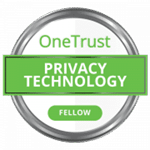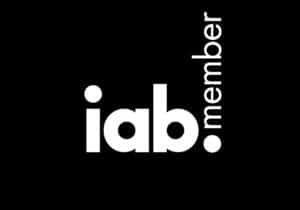Introducing the Newcomer to the Data Party
There’s a party, and you’re invited!
“Who’s coming?” you ask.
Well, we don’t really know.
“Who’s throwing it?” you say.
Kind of no one.
“Umm . . . I’m confused. Is this actually a party?” you respond.
It is! It’s a zero-party data party.
Let us explain.
What is “zero-party data” in the first place?
First-party, second-party, third-party, now zero-party?
We know, you’re probably wondering how there could possibly be another type of data at this stage in the game. But trust us, this is the kind of data you’re going to want.
First coined by global market research company Forrester, zero-party data is information your customers voluntarily share with you about things like purchase intentions and color/size/style preferences.
Because users voluntarily share it with you, it will be more specific, more accurate, and more valuable to your company. But first thing’s first—how does zero-party data fit into the whole data landscape?
Data & the privacy revolution
As every aspect of our lives becomes more dependent on the internet for everything from paying bills to shopping to medical appointments, the way companies collect and use individual personal information online is under increasing scrutiny.
In 2016, the European Union passed the General Data Protection Regulation (GDPR), an aggressive regulation that dramatically expanded consumer data privacy protections.
It totally changed the game.
Since the GDPR passed, many other governmental bodies have enacted privacy legislation. Partly in response to these new laws and partly as a reaction to consumer demand for control over their information, major browsers have begun to phase out support for third-party cookies, which have long been the foundation of digital marketing.
Additionally, the use of first- and second-party cookies has become strictly regulated.
Methods of data collection
Generally speaking, companies use various methods to collect data from their customers. Typically, first- or third-party cookies are used to passively collect and store information about the individual and web browser.
Zero-party data, in contrast, is proactively given by the individual.
| FIRST-PARTY | SECOND-PARTY | THIRD-PARTY |
|
|
|
| Where does zero-party data fit it?
Zero-party data isn’t a new type of data—it’s an alternative way of soliciting it from customers. Whereas first-party data is passively collected, the user voluntarily provides zero-party data. |
||
The death of the third-party cookie made the use of first-party cookies even more important. But first-party data is limited by nature because it requires you to proactively go after it and is restricted to certain categories of information.
Because you own the data, zero-party data is often considered a subset of first-party data. But zero-party data has some significant advantages over all other sources.
First, since it comes straight from the proverbial horse’s mouth, zero-party data is highly accurate, highly valuable, and capable of delivering insights that can’t easily be collected otherwise.
Second, zero-party data can reduce the guesswork marketing teams must undertake in determining how, where, and when to connect with target audiences.
Obtaining zero-party data also eliminates the need for data brokers or data collection vendors, making it a more cost-effective and compliant way to improve internal data quality.
How to RSVP to the zero-party party
One of the great things about zero-party data is the flexibility you have in collecting it.
Even simple things like an Instagram poll can provide actionable data that will help effectively guide your strategy. But ask for too much too quickly, and users will get suspicious.
Remember, zero-party data is different from the data collected from first-party cookies on a website or analytics tools within an app. It requires a high level of trust from your users that their information will be respected and protected.
So, what are some effective tools for zero-party data collection?
Registration forms
It’s traditional for apps to have a registration system as part of the download process, but it’s possible to do the same thing on a website. Using exclusive offers, future discounts, and privileged downloads, you can ask users for:
- Annual income
- Style preferences
- Purchase frequency
- Other preferred brands
- Lifestyle habits (related to your product, of course—don’t ask about workout routines if you provide financial counseling)
- Email address
Since this is the first time you’re asking customers to hand over personal information, don’t go overboard. Limited it to information that will help you deliver an excellent customer experience.
Wondering how email addresses can be both first and zero-party?
The differentiator between first- and zero-party data lies in how it’s used. Depending on the context and what it’s used for, an email address could be:
- First-party if used for signing up for a website or complete an online purchase
- Zero-party if used for a survey or sweepstakes or to opt-in to marketing men’s jeans, custom artisan backpacks, or anti-gravity sneakers
What differentiates first- and zero-party data is not how the data is collected, but why.
When used to provide a service, user data falls into the “first-party data” category. When volunteered by the user, though, to build a deeper relationship with a business and receive more customized services/communications/marketing, it’s zero-party data.
Social media
Using social media effectively is like having a giant billboard that your customers whisper secrets to every day.
Polls can help guide purchasing decisions toward popular products. Posts that are not only liked but shared can reveal what type of advertising (videos, photos, music choice) is most effective for your users.
Texts
With open rates of almost 98%, SMS messaging is one of the most reliable ways to connect with a target audience.
Bombarding customers with texts isn’t a great idea unless you want to turn into a modern-day telemarketer, but a post-purchase survey can inform the development of future offerings. An occasional text linking users to an “exclusive” opportunity to provide product feedback can both guide product lifecycles and give you unique insights into your most valuable customers.
We’d be remiss if we didn’t drop in a compliance reminder here. Specifically, a TCPA compliance reminder. Any marketing that takes place via SMS has to comply with TCPA regulations, which may pose restrictions on your marketing efforts to protect consumer privacy.
We know you probably already have an email list for marketing, but you can do more than just track open rates and website clicks with it. Like data collection via texting, emails with links to surveys, review pages, similar products, or blog posts all provide opportunities to collect more information about your customers.
In-store
Data collection doesn’t always have to be digital. Sometimes the most effective method is a simple, old-fashioned form by the cash register.
Preference centers
Preference centers are dedicated pages on a website or within an app where your users can tell you what types of data they’re okay with you collecting and how/when they want to be contacted.
A preference center helps with privacy compliance, but it can also give you insights into what your customers want.
Careful collection is key
No matter how you collect data, remember that zero-party data isn’t about you. It’s about your customers. Data collection improves your products and services, but the ultimate goal is to improve customer experience.
And it’s all based on trust. Users are willingly accepting the risk of having their information exposed because they believe they’ll receive something valuable in return and that their information will be protected.
You have to keep your end of the bargain by having a strong privacy program in place that has adequate security measures. And you have to use the information you’ve been given wisely. Don’t over-contact anyone. Don’t ask for information that isn’t necessary. Don’t share or collect more information without permission.
We know zero-party data works because we collect it ourselves. We’re constantly refining our services and marketing to meet the needs our customers tell us about. If you need help setting up a privacy program, managing cookies, or establishing compliant data collection processes, set up a free consultation and let us help.









